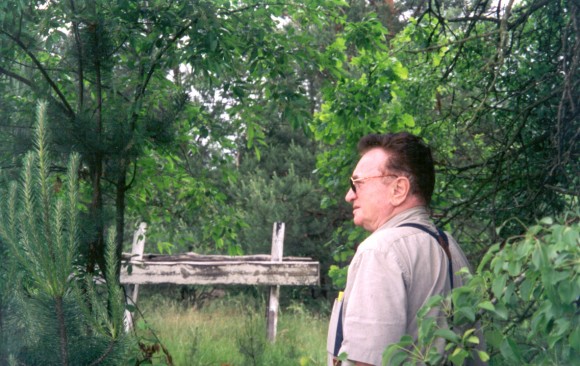The Sobibor Revolt 75 Years Later
October 15, 2018
Saturday, October 14, marked the 75th anniversary of the most successful revolt by prisoners during the Holocaust. It occurred at Sobibor, one of three Operation Reinhard death camps in Poland, where some 250,000 Jews were murdered during 1942 and 1943. In spite of the significance of what occurred at Sobibor, the courageous actions of the camp’s prisoners have received relatively little attention.
That may change with the new Russian film “Sobibor” that highlights the heroism of one of the two leaders of the revolt, Soviet Jewish army officer, Sasha Pechersky. The film is Russia’s Oscar entry for best foreign language film.
The prisoners chosen by the Nazis as forced laborers at Sobibor knew that they would soon be sent to the gas chambers as the workers at Belzec and Treblinka had been. Pechersky, along with fellow prisoner Leon Feldhendler, devised an escape plan, utilizing the Nazis’ greed against them. My friend, Tom “Toivi” Blatt, then 16 years old, was chosen to run messages to each of the guards saying that a beautiful new article of clothing—a leather jacket, a fur coat—once belonging to a Jew would be perfect for him. It only needed a few alterations which the tailor was ready to do right then. When the guard entered the room, the prisoners attacked.
The revolt did not go entirely according to plan, but in the end, some 320 of the 550 prisoners escaped. Around 57 survived the war. Tom Blatt dedicated his life to fulfilling Pechersky’s charge delivered to the prisoners: “Those of you who survive bear witness. Let the world know what happened here.”
Tom carried the scars of Sobibor until his death in 2015. One scar, a bullet lodged in his jaw, was physical. A farmer who hid him for a time after the revolt ultimately decided the risk was too great and shot him. Tom survived only by playing dead until the farmer left. But far more painful was the emotional scar Tom carried: the knowledge that he had survived when so many others did not. Tom always believed that he escaped being sent to his death immediately upon arrival at the camp because he willed the Nazi officer inspecting the prisoners to choose him as a worker—Tom became his shoeshine boy. Unfortunately, his will, strong though it was, could not save his parents or younger brother.
Just before the revolt began, Tom buried his soup bowl and a few other items he thought would be useful if he survived the escape. Thanks to Tom and his daughter Rena, we are honored to exhibit these items in our Sala and Aron Samueli Holocaust Memorial Library at Chapman University. They witness to Tom’s pragmatism and daring, and to the indefatigable hope that defined his life.
Tom wrote two books, Sobibor: The Forgotten Revolt and From the Ashes of Sobibor. I hope people will read them and learn about Tom’s and the other prisoners’ courageous actions. They deserve to be far more than a footnote of history.
Thomas Blatt’s video testimony is available online, courtesy of The 1939 Society



